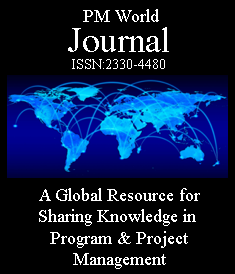A Global Resource for Sharing Knowledge in PPM
Privacy & Cookies: This site uses cookies. By continuing to use this website, you agree to their use.
To find out more, including how to control cookies, see here: Cookie Policy
To find out more, including how to control cookies, see here: Cookie Policy
Copyright © 2012–2025 PM World Inc. – All rights reserved · ISSN 2330-4480









The dual face of Hybrid Project Management (HPM)
Balancing structure and flexibility in the
evolution of Project Management
ADVISORY
By Antonio Bassi
Lugano, Switzerland
The dual face of Hybrid Project Management (HPM) represents one of the most significant evolutions in the field of project management, as it allows organizations to overcome the rigidity of traditional models through the flexible integration of various methodologies. The idea that a project can be managed exclusively through a single framework is giving way to a more dynamic approach, capable of adapting to the evolving needs of both the organizational context and the market. Hybrid Project Management does not merely combine predictive and adaptive methodologies but introduces a paradigm in which tools and principles from multiple schools of thought are harmonized to optimize project execution.
In this context, hybridization can take two distinct forms:
Hybrid Project Management is increasingly establishing itself as a scalable solution applicable to a wide range of contexts, from IT projects to construction, from manufacturing to financial services. The future of this approach appears to be increasingly shaped by emerging technologies, with the integration of artificial intelligence tools and data analytics to enhance predictive capabilities and optimize resource management. The true strength of HPM lies in its ability to combine structure and flexibility, allowing organizations to navigate an increasingly complex environment without sacrificing either control or innovation. The continuous evolution of this approach will lead to increasingly sophisticated management models, where hybridization will no longer be merely a strategic choice but a necessity to tackle the challenges of modern project management.
More…
To read entire article, click here
How to cite this work: Bassi, A. (2025). The dual face of Hybrid Project Management (HPM): Balancing structure and flexibility in the evolution of Project Management, PM World Journal, Vol. XIV, Issue IV, April. Available online at https://pmworldlibrary.net/wp-content/uploads/2025/04/pmwj151-Apr2025-Bassi-The-dual-face-of-Hybrid-Project-Management.pdf
About the Author
Antonio Bassi
Lugano, Switzerland
Antonio Bassi Is an Electronic Engineer by training, certified Project Management Professional (PMP), member of the Steering Committee of the Project Management Institute – Northern-Italy Chapter (PMI-NIC) from 2004 to 2008, Lecturer in Project Management in academic settings, President of the Project Management Association (APM-Ticino), author of numerous books and articles on project management, former member of the UNI team for the definition of ISO21500 standards for Project Management, with 20 years of experience as Project/Program Manager on innovative projects across various market sectors. He can be contacted at antonio.bassi@supsi.ch
To view other works by Antonio Bassi, visit his author showcase in the PM World Library at https://pmworldlibrary.net/authors/antonio-bassi/
Share this:
Like this:
Related